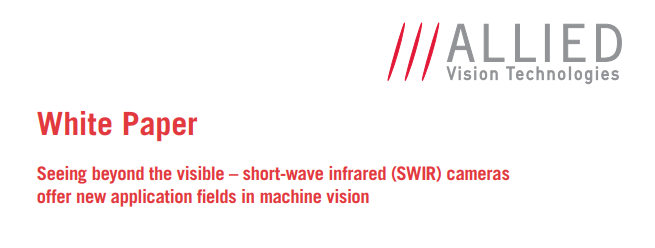Short-wave infrared (SWIR) cameras open up numerous possibilities for machine vision solutions, since they detect invisible product flaws as well as offering other critical imaging application characteristics. In contrast to mainstream machine vision cameras with CCD or CMOS sensors, most SWIR cameras have an InGaAs (Indium Gallium Arsenide) sensor and thus detect wavelengths between 900 nm and 1,700 nm. These wavelengths are invisible to the human eye and CCD or CMOS cameras and allow for seeing things such as water accumulation inside of fruit or tiny surface defects of silicon circuits and other devices.
This downloadable PDF White Paper offers examples of SWIR camera applications in several fields such as the semiconductor industry, recycling, metal and glass inspection, and airborne remote sensing. The paper offers insight on how some SWIR cameras are not just engineered for obtaining high quality images of difficult to see products, but they’re designed to withstand the rigors of challenging industrial environments.
